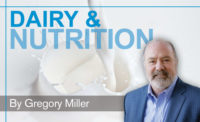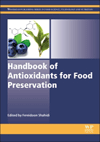Making the case for dairy proteins
Plant-based alternatives do not have the same protein benefits as dairy foods

Consumers are interested in food trends, including plant-based foods. While households may sometimes buy plant-based products, almost all still purchase dairy overall. That’s a good thing, because not all proteins are equal.
Can’t beat dairy
Cow’s milk delivers a higher quality and quantity of protein compared to most alternatives. For example, plant-based beverages offer about 1 gram of protein per 8-ounce serving, while cow’s milk provides 8 grams for the same serving size. Cow’s milk also is naturally rich in nutrients such as protein, calcium, phosphorus, riboflavin and vitamin B12. Meanwhile, plant-based alternatives are often fortified with nutrients they do not naturally contain.
The Dietary Guidelines for Americans state that alternative beverages, other than fortified soy beverages, are not included in the dairy group because “their overall nutritional content is not similar to dairy milk and fortified soy beverages.” And in a joint statement, the Dietitians of Canada and the Canadian Pediatric Society cautioned that plant-based alternatives should not be the main beverage for young children as they may lack the nutrients children need, including protein and fat.
Understanding protein quality
What is protein quality? Quality differs based on the amino acid composition, digestibility and bioavailability. Higher-quality proteins have the full array of essential amino acids in sufficient amounts required by the body. High-quality proteins are more digestible, and their resulting amino acids are more bioavailable in comparison to lower quality proteins.
According to a 2017 study published in Frontiers in Nutrition (https://tinyurl.com/y49twzef), dairy’s unique proteins (i.e., whey and casein) have the highest protein quality score available from the currently recognized gold standard called the Protein Digestibility Corrected Amino Acid Score (PDCAAS).
A 2015 study published in The Journal of Nutrition (https://tinyurl.com/y2tlty25) found that gram for gram, dairy proteins provide one of the highest concentrations of essential amino acids and leucine available, which are the primary drivers of muscle protein synthesis.
Most plant proteins are lower-quality proteins because they either lack certain essential amino acids or have insufficient amounts of them, being less digestible and/or less bioavailable. To obtain a similar amount of biologically available essential amino acids from a lower-quality protein, you’d need to eat more of it or mix protein sources with amino acid profiles that complement each other. This is why the FDA requires PDCAAS scores to be factored into calculation of the % Daily Value of protein per serving listed on the Nutrition Facts panel.
From a practical standpoint — calories, affordability and efficiency — it makes sense to get essential amino acids from high-quality protein foods that provide a concentrated source and are highly digestible and biologically available. Dairy foods and dairy protein ingredients fit that bill.
Quantity isn’t everything
While most focus on protein quantity when looking to optimize protein consumption, protein quality should not be overlooked. Protein is an essential nutrient that supports growth, maintenance and repair of muscle tissue, which is important for growing kids, middle-aged to older adults, athletes and others who participate in regular vigorous exercise.
Not all proteins are created equal in their ability to provide this support. Additionally, essential amino acids are needed to make the new proteins in our body that support healthy immune function, transport oxygen to muscles, and metabolize the foods we eat into available nutrients.
Dairy and plants are not an either/or proposition. Dairy foods enhance plant-based foods, helping to round out healthy eating patterns — not to mention the taste and endless options for meals and snacks that dairy foods offer!
Looking for a reprint of this article?
From high-res PDFs to custom plaques, order your copy today!






